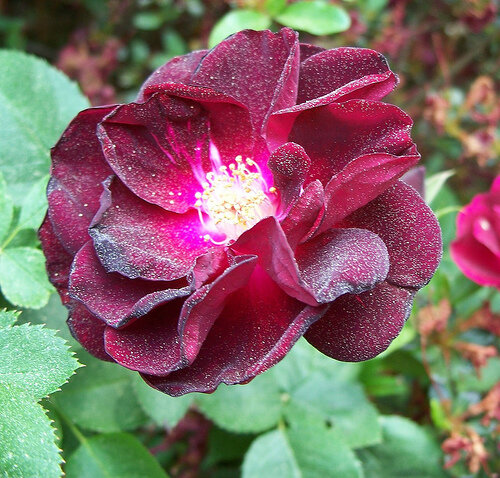Two Roses in One?
So your rose bush is blooming magnificently. Bright, big flowers… glossy green leaves… wow, it's doing so well it's actually blooming in two colors this year!
Wellll, not actually.
If your rose bush is blooming in two colors, odds are one of them is a deep maroon red, a little smaller than the other, distinctly different when you look a bit closer. If this is the case, you don't have one rose flowering in two colors: you have two roses.
See, most roses sold and planted in California are hybrids: genetic crosses of two or more different varieties. They're bred this way to give us distinct joy: brighter flowers, glossier leaves, repeat flowering, greater resistance to disease. “Hybrid tea” roses are particularly desired by many rose owners, for their large single flowers that look like something straight out of a florist’s catalog.
You can't have it all, though, and what makes these roses beautiful upstairs makes them weak downstairs.
The answer? An ancient technology: grafting. By splicing that gorgeous body onto robust roots that can handle frost, rot, nematodes, fungus, drought, etc., humans figured out that we can have it all.
The only problem, and it's really just a minor one, is that those roots are — by definition — more robust than the body. And just like the body, their prime directive is to grow. Which means you get robust growth… just from the rootstock, not the body.
The bright salmon-red, hybrid tea rose climbing on this arbor is what the owner bought (‘Tropicana’, perhaps). The smaller dark red flowers are growing from the ‘Dr. Huey’ rootstock.
‘Dr. Huey’ is a Hybrid Wichurana variety first bred in 1914 and introduced to the United States in 1920.
So those smaller, maroon flowers are "suckers" growing from the rootstock, most likely a variety named "Dr. Huey" (named after a prominent early-1900s rosarian) that is used for almost all California-grown hybrid tea roses because it can handle poor soils, shade, cold, and most (but not all) diseases. It’s a climber by nature, so its canes are often longer and stronger than the scion grafted onto it.
Unfortunately, although "Dr. Huey" is beautiful in its own right, if left unchecked its vigor will sap the plant's energy from the more desirable body, the one you presumably bought the plant for in the first place. To prevent this fate, prune the suckers back as close to the primary cane as possible, as soon as you see them sprouting if possible. This will direct all that vigor back into the body of the bush before the rootstock takes off… so your rose bush can bloom magnificently after all.


